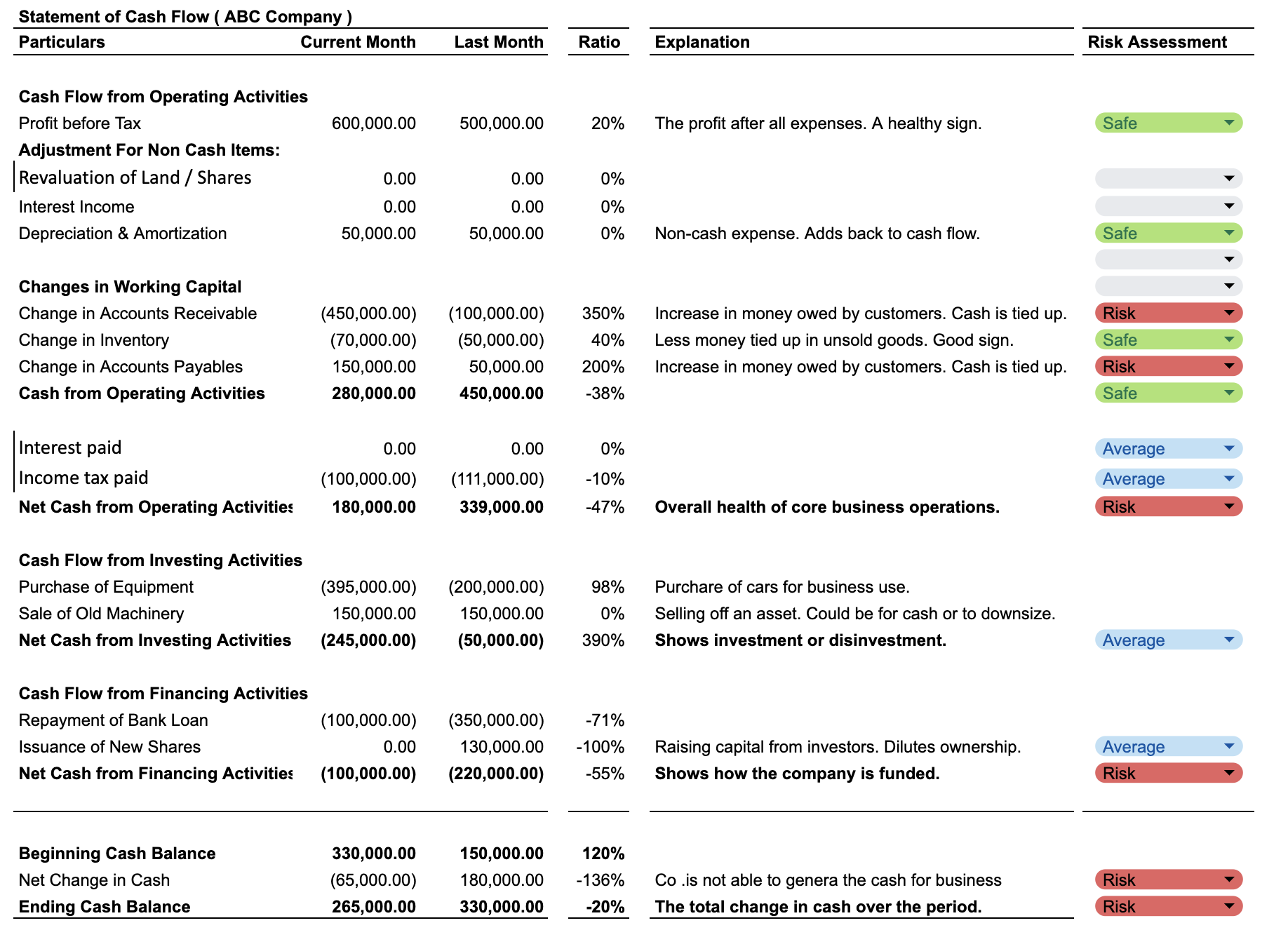These 3 section of Cash Flow Statement talk about your business risk.
August 1, 2025

First of all, lets get it know what is Cash for a Business?
Before we start, lets see one case study here below business due to non proper management of cash.
Case Study: Toys “R” Us Collapse Due to Cash Flow Mismanagement
- Toys “R” Us, once the world’s largest toy retailer, is a classic example of how poor cash flow management can destroy even a profitable business model.
- For decades, the company dominated the global toy market, but in 2005, it was taken private in a leveraged buyout worth $6.6 billion.
- This left the company burdened with massive debt. Every year, instead of reinvesting in innovation or digital expansion, a huge portion of operating cash flow went toward interest and debt repayments.
On paper, Toys “R” Us continued generating billions in sales. However, its operating cash flow was weak, as online competition from Amazon and Walmart reduced margins while customers delayed payments. With declining liquidity, the company could not upgrade stores, modernize supply chains, or invest in e-commerce platforms.
By 2017, the company filed for bankruptcy. Despite having strong brand recognition, it lacked the cash needed to adapt and compete.
Lesson: Profitability is meaningless without healthy cash flow. Toys “R” Us had sales and brand strength, but debt pressure and poor cash flow decisions drained liquidity, ultimately forcing its downfall.
So, In the simplest terms, cash is the lifeblood of a business. Just like humans cannot survive without oxygen, businesses cannot survive without cash. It represents the actual money available to pay suppliers, employees, taxes, and to reinvest in growth. Unlike “profit,” which is often just an accounting figure, cash is real and liquid — it determines whether a business can meet its short-term obligations and seize new opportunities.
So lets see Importance of Cash in Business
Cash keeps day-to-day operations running smoothly. Salaries, rent, utilities, and raw materials all need cash.
Crisis Buffer i.e. Businesses with strong cash reserves survive downturns, crises, or unexpected shocks more easily.
Growth Enabler i.e. Cash allows investments in expansion, R&D, marketing, and new technology without depending entirely on loans.
Trust & Credibility i.e Suppliers, banks, and investors trust companies that demonstrate healthy cash positions.
So what are Pros of Having Strong Cash
Liquidity Security: Ensures bills and obligations are met on time.
Negotiation Power: Businesses with cash can negotiate better deals with suppliers and lenders.
Flexibility: Cash allows quick decision-making for expansion, acquisitions, or crisis management.
Reduced Debt Dependency: Minimizes reliance on expensive borrowing.
So what are Cons of Poor Cash Management
Liquidity Crisis: Even profitable companies can collapse if they run out of cash (classic case: rapid-growth startups).
Lost Opportunities: Without available cash, businesses miss out on expansion or investment chances.
High Borrowing Costs: Companies may resort to emergency loans at higher interest rates.
Erosion of Stakeholder Trust: Delayed payments damage supplier and investor confidence.
Why Analyzing the Cash Flow Statement is Vital
While the profit & loss statement shows performance, the cash flow statement reveals survival capacity. It answers:
Are operations generating enough cash to sustain the business?
Is the company over-investing without returns?
Are financing decisions (debt, equity, dividends) sustainable?
Without regular analysis, businesses risk:
Running into sudden liquidity shortages.
Failing to detect early warning signs of inefficiency.
Making poor strategic decisions (e.g., over-expanding or over-borrowing).
In short: cash flow analysis is the bridge between profitability and sustainability.
Would you like me to now merge this intro with the sample cash flow + risk assessment blog structure I gave earlier, so you have one complete draft from fundamentals → example → risks → recommendations?
Summarized by
Manik Balami
Corporate Financial Expert
Finance and Assurance Department
Rudolph Corporate Services Pvt. Ltd.
Disclaimer: Kindly seek the expert before taking any action based on the content here above.
Other Blogs
Sweat Equity Shares and ESOPs : New amendment for Employee Incentives in Nepal
January 22, 2025
 Read More
Read More 



